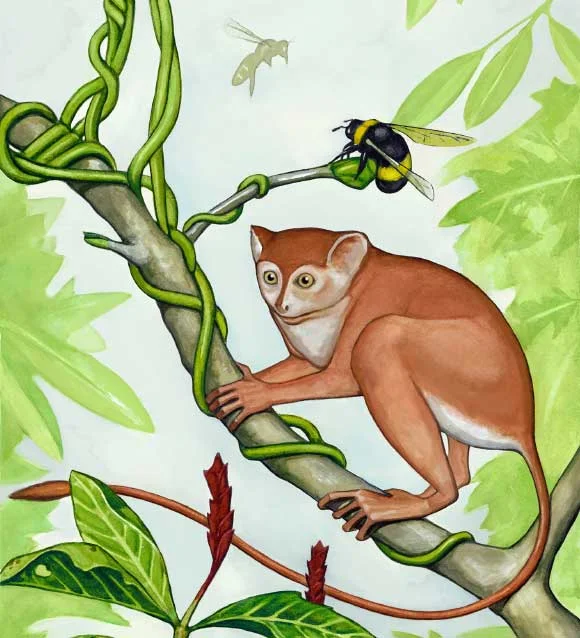| Cepaea nemoralis |
They were hoping to find genetic clues to the origins and diversity of this group of common European snails by looking at their mitochondrial DNA.
Abstract
The origins of flora and fauna that are only found in Ireland and Iberia, but which are absent from intervening countries, is one of the enduring questions of biogeography. As Southern French, Iberian and Irish populations of the land snail Cepaea nemoralis sometimes have a similar shell character, we used mitochondrial phylogenies to begin to understand if there is a shared “Lusitanian” history. Although much of Europe contains snails with A and D lineages, by far the majority of Irish individuals have a lineage, C, that in mainland Europe was only found in a restricted region of the Eastern Pyrenees. A past extinction of lineage C in the rest of Europe cannot be ruled out, but as there is a more than 8000 year continuous record of Cepaea fossils in Ireland, the species has long been a food source in the Pyrenees, and the Garonne river that flanks the Pyrenees is an ancient human route to the Atlantic, then we suggest that the unusual distribution of the C lineage is most easily explained by the movements of Mesolithic humans. If other Irish species have a similarly cryptic Lusitanian element, then this raises the possibility of a more widespread and significant pattern.
 |
| Distribution of main Cepaea nemoralis mitochondrial lineages across Europe. C = Irish and Eastern Pyrenean gene line. |
There are other clues suggesting a link between these two areas in the form of the Kerry slug, Geomalacus maculosus found only in County Kerry, Ireland, northwest Spain and central Portugal, a species of strawberry tree, Arbutus unedo native to the Mediterranean and southwestern Ireland, and the Pyrenean glass snail, Semilimax pyrenaicus found in the Pyrenees and Ireland.
At first sight it might seem strange that people, and the plants and animals they took with them, would get to Ireland without going via Britain (and so leaving their snails there too) until you consider the geography of the time. There were no roads to speak off by which to cross Brittain, which was, especially in the south, heavily wooded, even on the hills. The valleys would have been difficult to travel through often being thickly wooded and boggy. Additionally, there were no pack animals, the horse and donkey were not domesticated for another 4-5,000 years, apart from the small problem of getting them across the Channel even if they had been domesticated earlier.
If you could sail or row a boat, water was by far the easiest way to travel. In effect, the sea, especially inshore waters, and rivers were the highways. The boat becomes the pack animal and the means of transport. Wind and/or manpower was the energy source. Not surprisingly then the main route for human migration, especially the initial migration out of Africa, was by coastal spread, and so Ireland, and maybe southern and western Britain was very probably first colonised by people from the Iberian Peninsula who had themselves reached those locations by coastal spread around the Mediterranean.
That's all very interesting from the perspective of human history of course, but the interesting thing here for an evolutionary biologist is how the distribution of species was affected by human migration and trade. The spread of humans was a major change in the environment of these species, specifically the grove snail. Not only did human agriculture and changes in land use change the landscape on which they lived, sometimes opening up new niches, sometimes closing existing ones and, in the case in point, redistributing a species to a new range which it was highly unlikely to have reached on its own.
| Cepaea nemoralis. One of many colour forms. |
The 'selfish' snail genes of course had no concern that most of the snails would have been eaten. The 'strategy' worked because it worked. Had it not done the grove snail would now be confined to the eastern Pyrenees and no one would be any the wiser. Human history might have been a little different too.
Here we have an example of evolution in progress. An environmental change created an opportunity for the grove snail to move into a new range, facilitated by a temporary alliance between two species which turned out to be mutually beneficial. Given time the two populations of C. nemoralis will diverge and form genetically distinct populations. Eventually they will lose the ability to interbreed and we will have two new species where once there was one. Of course, no intelligence, no planning and no design was involved in that process. Nothing and no-one planned to have these snails introduced to Ireland just as nothing and no-one planned to have them in the Pyrenees in the first place. It was merely living things doing what living things do, and the consequences turning out to be what they were.
As a final note, I wonder how many readers spotted the way Darwinian evolution underpinned the use of biodiversity to elucidate and explain human distribution and early human history. This is just another example of how this scientific theory is now regarded as a basic science and how it has hugely powerful explanatory powers, and not just in the province of biological diversification.
References:
Scientists Use Snails to Trace Stone Age Trade Routes in Europe | Surprising Science'via Blog this'
Grindon AJ, Davison A (2013) Irish Cepaea nemoralis Land Snails Have a Cryptic Franco-Iberian Origin That Is Most Easily Explained by the Movements of Mesolithic Humans. PLoS ONE 8(6): e65792. doi:10.1371/journal.pone.0065792









